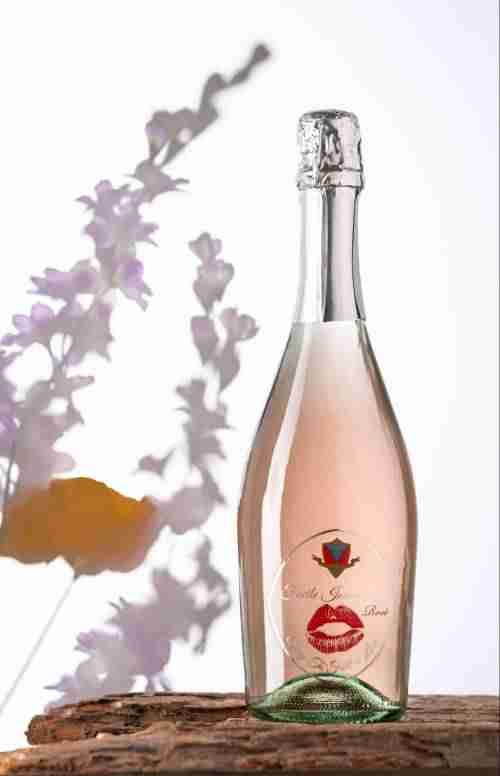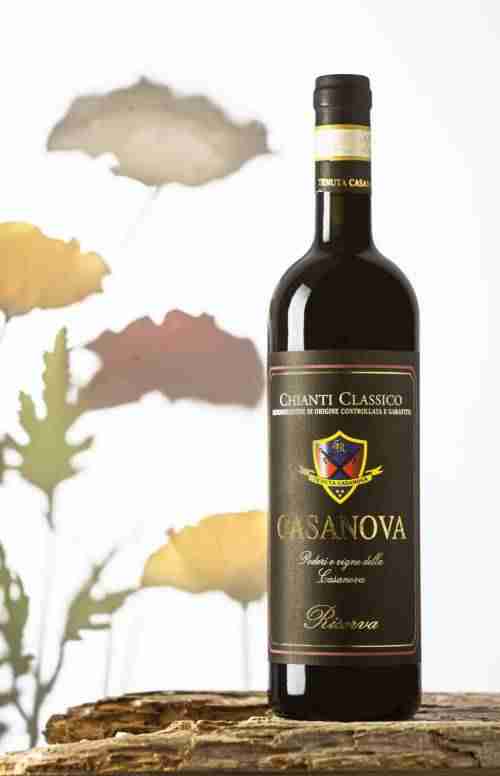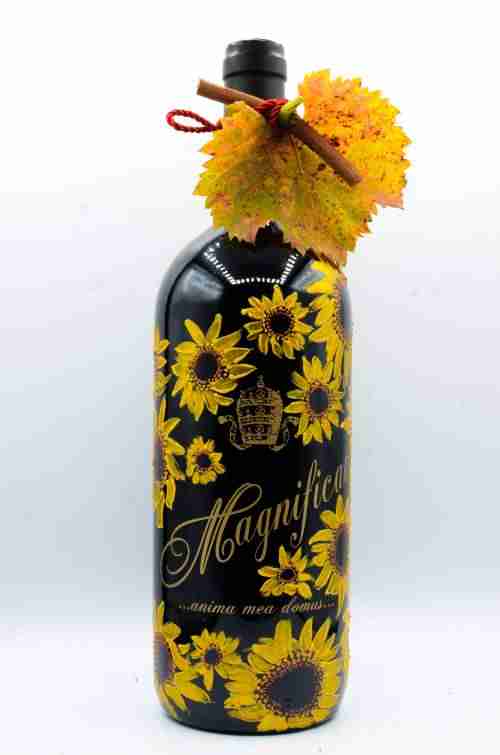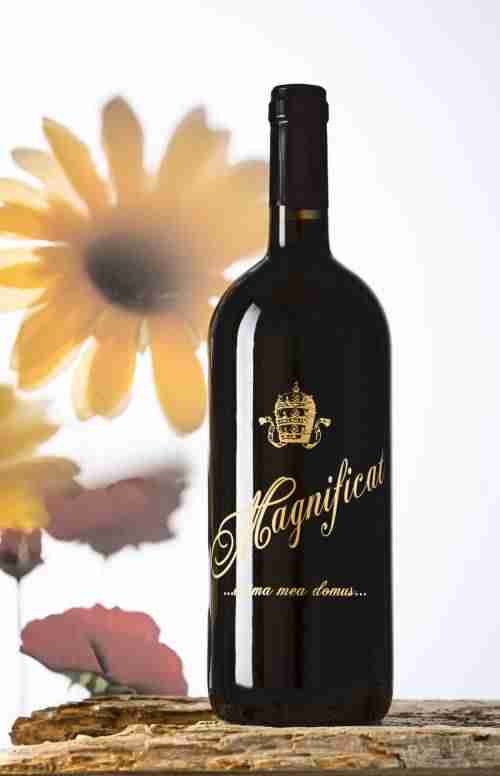What is Chianti wine?
Chianti is one of Italy’s most recognizable wines. This dry red wine gets its name from the area it is made in, which is Italy’s most beautiful region of Chianti in central Tuscany. Chianti red wine is made with the Sangiovese grape that is native to the Chianti region and it is the most planted grape variety in Italy. Known for its unique and scenic landscape of gentle rolling hills, cypress and olive trees, the Chianti region is the perfect place for growing sangiovese. Chianti is produced with 75-100% sangiovese grapes with any additional varieties like Canaiolo. This rustic Italian red wine is aged in oak barrels anywhere from 7-36 months and can have a light to full body with notes of black and red cherry, earth, tobacco, and balsamic vinegar. Chianti wine color can vary depending on how long it is aged. Younger chianti wines are bright red to almost purple while Chianti Classico Reserva, which is aged longer, has a burgundy color. Chianti was designed to pair best with Italian food and today it is one of the most sought after wines in all of Italy.
The History of Chianti
This essential Italian staple dates all the way back to the 13th century and it has been popular ever since.To prevent wine fraud, Chianti was declared the first legally protected wine region in Italy by the Grand Duke of Tuscany in 1716 in what was believed to be the first legislation that governed wine production. The chianti dry red wine that is seen today wasn’t discovered until 1872 by a Florentine politician named Bettino Ricasoli, also known as the “Iron Baron”. His main goal was to create a wine that could compete with those made in France and researched tirelessly to find the best grapes for Tuscany’s soil and climate. Based on his discoveries, Ricasoli required that chianti must consist of at least 70% of the red Sangiovese grape, with the remaining blend consisting of the red Canaiolo grape, and Malvasia and Trebbiano, which are white grapes.
Fast forward to the 1970s when Chianti red wine most notably grew in popularity due to high demand, but the status of the wine changed as many winemakers were planting inferior grapes that caused the wine to significantly drop in price. As a result, the regions that produced this wine underwent new regulations as to what could be defined as Chianti. A new wine classification system was then passed in 1996 known as Denominazione di Origine Controllata e Garantita (DOCG), which is Italy’s highest level of wine classification that provided the wine must be controlled and guaranteed to prevent clones from being made. However, the real progress wasn’t seen until the Chianti Classico 2000 project was released to the public and identified over 239 sangiovese clones in the region. This helped to define what made a chianti classico that was seen hundreds of years ago compared to a basic chianti. In order to be considered a chianti classico, the wine must contain at least 85% of the sangiovese grape.
Today, there is a variety of classifications of chianti and the grapes are all grown in seven different chianti DOCG sub zones which are Chianti Colli Aretini, Chianti Colli Fiorentini, Chianti Colli Senesi, Chianti Colline Pisane, Chianti Montalbano, Chianti Montespertoli, and Chianti Rufina. Chianti Rufina and Chianti Colli Senesi are the two that you will most likely find in the United States.
Tenuta Casanova’s farm dates back all the way to the Middle Ages and in the last 6 years, we completely renovated and restored the farm to its original settlement of 300 acres of vineyards and 500 acres of olive groves surrounded by cypress trees. Our farm is completely organic and our wines have no added sulfites. We offer all of our finest Italian wines such as Chianti Classico Riserva, Dincanto which is our Merlot, Sorberossa (Sorbaia) and Magnificat which are our Super Tuscans, Easy to Fall in Love Sparkling Rosé, and Grouse Eye which is our dessert wine.
Benefits of Chianti Wine
Just like many other red wines, Chianti has health benefits as well! Red wine has antioxidants called polyphenols which are known to help prevent heart disease, lower your risk of diabetes, help with digestive issues, and they also have anti-inflammatory and anti-aging properties. Chianti red wine in particular, which is usually darker in color and is high in tannins, has a higher polyphenol content than most. You can buy chianti wine online at Tenuta Casanova, such as our Chianti Classico Riserva that is completely organic and has no added sulfites. Our sangiovese grapes are grown at our vineyard in the Chianti Classico region in Tuscany and our chianti falls under the DOCG category which is the highest classification of Italian wines.
Chianti Wine – Frequently Asked Questions
What does Chianti wine taste like?
A typical Italian chianti red wine is acidic, dry, and tannic with notes of dark cherries, balsamic, ripe plums, tobacco, and leather. Once a bottle of chianti is uncorked, it is best to let it breathe which will bring out the complexity of its flavors. Since Chianti has higher acidity it pairs so perfectly with Italian foods such as creamy cheese, fresh tomatoes, salty meats like prosciutto, and dried fruits. The longer a chianti is aged in oak barrels, the better the taste will be such as a Chianti Riserva which has been aged for two years in oak barrels and a chianti Selezione, which has aged for two and a half years in oak barrels. Some Chianti Riservas are even aged for up to twenty years, so imagine how incredibly complex the flavor is! At Tenuta Casanova, our Chianti Classico Riserva is aged for three years in small oak casks and has a beautiful ruby red color with complex notes of strawberry, cherry, vanilla, mediterranean herbs, and rosemary.
Is Chianti wine light or heavy?
Chianti has an incredible balance of acidity, tannins, and can have a light, medium, or full body. The alcohol content plays a big part in how light or heavy the wine will be, especially depending on how long it is aged. Chiantis are anywhere between 11.5-15% alcohol by volume and when chianti grapes are kept on the vine longer and aged in oak for a longer period of time, the higher the alcohol content will be. Plain red wine chianti such as Italian table wine have around 11.5% alcohol by volume so it will have a much lighter body and will have a lighter color. Chianti Classico has a medium body with about 12% abv while higher end wines such as Chianti Classico Riserva 12.5-15% abv and Chianti Classico Gran Selezione 13-15% abv. As you move up the scale in alcohol content, chiantis will tend to be smoother, have a fuller body, and will be a bit pricier as well. You can find an incredible chianti wine bottle at Tenuta Casanova. Our Chianti Classico Riserva is available for purchase online and has a full but smooth body and pairs very well with Italian food.
What is Chianti wine similar to?
Chianti wine flavor is extremely unique but if you can’t get your hands on a botte there are a few alternatives you can try that are similar such as Barbera, which is grown in the Piedmont region of Italy, and has notes of cherry, strawberry, and are acidic like chianti. Tempranillo is another alternative, a Spanish wine variety that has kindred flavors to the sangiovese grape with notes of cedar and tobacco. Syrah or Shiraz, which is typically produced in Australia, Chile, or the United States is very similar to chianti too with notes of dark plums, cherries, and blackberries. Another red wine that is very similar to the characteristics of Chianti would be a Cabernet Sauvignon because it is dry and acidic. Some Cabernets can be more bold so they won’t pair as well with a basic Italian food like margarita pizza like a Chianti would. When it comes down to it, you can find wines that are similar to chianti but you will never be able to taste the true Italian flavors of a classic Chianti wine from Tuscany. When you taste this classic Italian staple, you will instantly be transported to Italy. It is like no other wine in the world!
Is Chianti considered a good wine?
A Tuscany Chianti wine is considered to be one of the greatest Italian wines, and it is so special because it can’t be made anywhere else in the world. However, a simple Chianti can’t compete with a Chianti Classico and if you are looking for the real deal you need to look for the trademark that every Chianti wine bottle has that are made in the Chianti Classico region of Italy, which is a black rooster also known as The Gallo Nero. Chianti Classico wine pairs so well with a variety of Italian foods and it’s an excellent go-to wine because it is moderately priced. Chianti Classico Riserva is an incredible Italian red wine to start with too if you’ve never had chianti before. This chianti classico wine has higher standards and requires aging for two years in oak barrels with an additional three months in the bottle. Sometimes Chianti Classico Riserva can come at a higher price point but at Tenuta Casanova we offer the best chianti wine, such as our Chianti Classico Riserva DOCG comes at an incredible price and is made with 100% hand picked sangiovese grapes from our beautiful organic vineyard in Tuscany.
Is Chianti a sweet wine?
Chianti is considered a dry red wine and you wouldn’t typically hear someone describe it as sweet. When chianti is made it goes through the full fermentation process which will leave no residual sugars, resulting in a very dry red wine. An Italian red wine that is sweeter requires stopping the fermentation process earlier so you may be able to find a slightly sweet chianti wine if it hasn’t aged very long. However, if you are looking for a sweeter wine that would pair better with dessert, you should try Tenuto Casanovas Grous Eye, which is made from Sangiovese grapes grown on our organic vineyard in Tuscany. Grouse Eye is a wonderful dessert wine that is both dry and sweet at the same time.
Is Chianti a dry wine?
Compared to most Italian wines, Chianti red wine is considered to be much drier than most because of the high levels of tannins in this wine. Tannins are naturally occurring bitter and astringent compounds that are found in the skin, seeds, and stems of grapes, as well as the oak barrels that wine is aged in. Chianti is mainly dry because of the fermentation process and how long it is aged. When the fermentation is achieved correctly, this removes the excess yeast and sugar, thus making it dry. Italian wine makers wanted chianti to be a dry wine when they originally designed it because a dry wine pairs much better with food than a sweeter wine would because you can taste the flavors
What is the best time to drink Chianti wine?
The best time to drink chianti wine is when you are having a meal, especially if you are eating…you guessed it, Italian food. Any tomato based pizza or pasta, Italian cheeses, and cured meats. Chianti also pairs well with steak, lamb, and chicken. Because of the savory and acidic flavors in this wine, it cuts through meat and foods with higher fat content. Chianti is best served at 55-60 degrees so it can be slightly chilled and it should always be stored horizontally so the cork doesn’t affect the flavor or the wine too much. Chianti is a wonderful red Italian wine that should be shared over a meal with family and friends. If you want to find the best chianti, you should turn to Tenuta Casanova’s Chianti Classico Riserva DOCG. This exceptional wine is perfect to accompany any meal.
Is Chianti an expensive wine?
The best chianti wine comes from the Tuscany region of Italy, but during the 1960’s and 1970’s Chianti had a reputation for being cheap because it wasn’t being produced to the more rigorous standards seen today. Because more stringent rules were put in place for Chianti wine makers, you can find a fantastic bottle of chianti in a variety of price ranges. The chianti wine price really depends on a few factors including the region it is from, demand, the grapes used, fermentation, and how long it is aged. A chianti red wine price is anywhere from $7 USD to $50 USD. Chianti Classico wine tends to be on the higher end and will come at a higher price point depending on the bottle you get. Chianti Classico Riserva can range anywhere from $10 USD to $300 USD. Most of the Chianti wines you see at a higher price point is Chianti Classico Gran Selezione which is the highest classification of Chianti. This is a vintage wine that must age for a minimum of three years. You can find very cheap versions such as Chianti box wine, but we suggest finding a corked bottle because it agest and tastes much better this way. Some Italian wine brands are better than others and at Tenuta Casanova’s we offer the very best you can find, which is our Chianti Classico Riserva made from 100% sangiovese organic grapes at an affordable price. If you aren’t a fan of chianti, you should try another alternative that is sold online at Tenuta Casanova, such as our Magnificat, which is our Super Tuscan wine blend in a magnum bottle. We have been producing this wine since 1997 with our combination of Sangiovese and Merlot grapes that are aged separately in small casks and matured in larger barrels for another year.
Is Chianti wine sweeter than cabernet?
Chianti Italian wine and Cabernet Sauvignon are dry red wines with a medium to full body. Many would say these two wines are fairly similar in taste because the grapes used in these varieties have similar characteristics. According to most wine experts, Chianti would be considered a little sweeter than a cabernet sauvignon. Cabernet Sauvignon originates from France, and it is extremely popular but it can be produced and purchased all over the world. Chanti is much more rare, which makes it very unique only coming from the sangiovese grape that is found in the Tuscany region of Italy. Chianti wines also pair much better with food since cabernets have much more intense flavors than chiantis.
What does Chianti wine pair well with?
Chianti and food go hand in hand, and in Italy it is an essential part of a meal. Chianti pairs extremely well with all Italian food such as pizza, tomato based pasta dishes such as spaghetti bolognese, lasagne, or baked ziti, Italian cheeses like pecorino romano and mozzarella, extra virgin olive oil, and uncured meats such as salami or prosciutto. Chianti Riservas which are aged longer than basic chiantis pair extremely well with steaks such as a t-bone or ribeye and game such as wild boar, lamb, sausages, any type of braised red meat. Because chianti has high acidity and harmonious tannins, it won’t clash with a tomato-based dish. The high acidity in chianti red wine also cuts through richer, more fatty meat dishes. If you decide to drink a chianti red wine with seafood, we suggest pairing it with a chianti on the lighter side although most wine experts will argue that an Italian white wine will be the best if you are trying to host a dinner with seafood dishes.
Is Chianti good for the heart?
Research has shown that drinking a moderate amount of red wine such as chianti can help prevent coronary artery disease, which is the condition that leads to heart attacks. This is something that many scientists don’t completely understand, but one of the main benefits are the antioxidants called polyphenols that are found in the skin and seeds of the sangiovese grape used to make Chianti. Antioxidants increase levels of high density lipoprotein (HDL), also known as “good cholesterol”. A type of polyphenol that is found in Chianti red wine is called resveratrol. Resveratrol can help prevent blood clots, damage to your blood vessels, and reduce inflammation. When red wine is made, the skins remain during the fermentation process which is not the case with white wine, so chianti is the perfect wine to drink in moderation if you are trying to get more antioxidants! Most Italians drink chianti in combination with a Mediterranean diet, which has many health benefits as well. Italy, which borders the Mediterranean Sea is known to have foods that are heart healthy, such as vegetables, fish, olive oil, breads, nuts, and pastas. When you pair this diet with chiantis that are dark in color with higher tannins, such as a Chianti Classico Riserva, you are doing great things for your heart! At Tenuta Casanova, our Chianti Classico Riserva DOCG is made from 100% organic sangiovese grapes and there are no added sugars or sulfites in our wine.
How should you drink Chianti wine?
Chianti Italian wine should always be poured into a red wine or chianti glass that should be held at the top of the stem. According to many wine experts, you should swirl chianti gently in your glass so you will smell the amazing aromas of cherry, leather, earth, and flowers. If you are purchasing chianti for the first time, it is best to let it age a little longer in a dark, cool cellar before opening the bottle. Chianti is best served when it is slightly chilled. Getting the temperature down anywhere from 55-60 degrees fahrenheit is best and you can achieve this by chilling it in the fridge for 30-45 minutes then setting it out at room temperature just before serving. If you chill it for too long though, you will miss out on tasting the subtle notes of flavor this wine has to offer, so be sure not to store it in the refrigerator.







